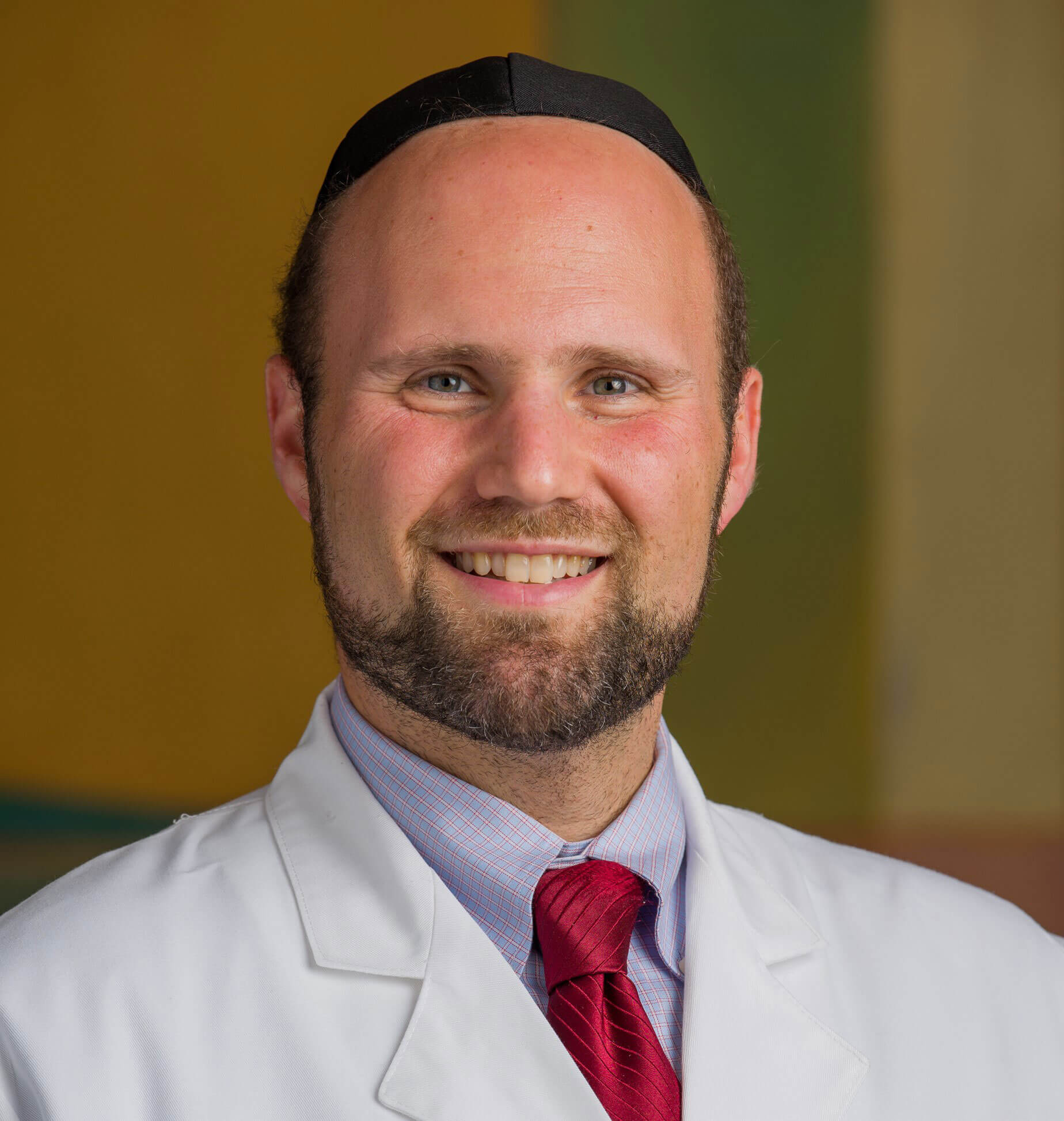SomaLogic Announces Proteomics Collaboration with University Hospitals Harrington Heart & Vascular Institute
February 03, 2022
Innovations in Cardiovascular Medicine & Surgery | Winter 2022
SomaLogic, a leader in proteomics technology, recently announced a strategic collaboration with University Hospitals Harrington Heart & Vascular Institute as part of its SomaSignal™ Proteomics for Precision Medicine Initiative. The project is the first large-scale, multisite partnership evaluating the potential of next-generation proteomics platforms to inform clinicians’ point-of-care decisions.
 Ian J. Neeland, MD
Ian J. Neeland, MDIan J. Neeland, MD, and Sadeer Al-Kindi, MD, Co-Directors of the Center for Integrated and Novel Approaches in Vascular-Metabolic Disease (UH CINEMA) at University Hospitals Harrington Heart & Vascular Institute, are the principal investigators for the novel collaboration. Their leadership of the nationally recognized cardiometabolic center makes University Hospitals an ideal setting to explore proteomics as a tool to advance the medical management of patients with type 2 diabetes who are at elevated risk for cardiovascular disease.
“We are excited to partner with SomaLogic as a strategic innovator in this space,” Dr. Neeland says. “The capacity to extrapolate multiple data points from a single blood test and generate robust risk predictions highlights the potential of this emerging technology.”
The proprietary SomaScan® platform identifies novel biomarkers and drug targets. It can run approximately 7,000 protein measurements on 55 microliters of plasma or serum and has processed over a half-million samples to date, gathering over 180 million unique protein measurements. The initiative launched in 2019 and currently includes 12 laboratory-developed blood tests aimed at providing actionable health information for multiple diseases and conditions.
Over the next 12 to 18 months, University Hospitals’ study — titled Pragmatic Impact of Proteomic Risk Stratification in Diabetes Mellitus (Portrait-DM) — will target 600 patients with Type 2 diabetes between the ages of 40 and 89 who are currently eligible for, but not receiving, SGLT-2 inhibitors or GLP-1 receptor agonists.
“The only two cardiovascular risk factors that have not improved over the past several decades are diabetes and obesity, and they often exist together,” Dr. Neeland says. “By assessing thousands of proteins, the aim is to clarify a patient’s risk for heart and other diseases better than tools that are currently available to tailor therapies for individual patients with greater precision.”
SomaLogic’s Cardiovascular Risk in Type 2 Diabetes (CVD-T2D) test was developed in collaboration with experts at University Hospitals Harrington Heart & Vascular Institute. It models 27 proteins and encompasses 10 biologic systems. It then stratifies a patient’s risk as low, moderate, moderate-high or high. Six different data sets have been validated in cohort studies to predict the four-year likelihood of myocardial infarction, stroke, heart failure hospitalization, or death from heart disease.
The primary outcome of the study is to determine whether knowledge of these risk stratifications influences physicians’ medical management of these patients.
“We’re looking at prescribing patterns,” Dr. Neeland says. “Will providers pursue more aggressive, evidence-based therapies if the CVD-T2D test indicates elevated risk?”
He adds that a secondary outcome of the study is to survey provider perspectives on whether they felt that access to the risk stratification findings was impactful.
Candidates for the study are referred through their primary care providers, cardiologists or endocrinologists, and may also be flagged based on their coronary artery calcium score. University Hospitals is the only system offering the noninvasive atherosclerosis imaging at no cost to patients.
“If a patient is interested in the study, we send their providers an initial survey,” Dr. Neeland says. Subjects are separated into two arms. The first set of providers receives the CVD-T2D results, and investigators study whether they influence physician decision-making. Approximately 12 weeks later, the second set of providers receives the results in an open-label extension of the study.
While the CVD-T2D test is not currently clinically available, the goal is to actualize this technology for release to the healthcare market. “Over 10 percent of Ohioans and 50,000 of our patients in the University Hospitals Health System have diabetes,” Dr. Neeland says. “There's definitely a large population of at-risk patients who may benefit from their doctors having access to and understanding proteomics testing so they can improve outcomes and better prevent cardiovascular disease.”
To learn more about CVD-T2D testing or refer an at-risk patient for the study, call 440 508-8909.
Contributing Expert:
Ian J. Neeland, MD
Director, Center for Cardiovascular Prevention
Co-Director, Center for Integrated and Novel Approaches in Vascular–Metabolic Disease
University Hospitals Harrington Heart & Vascular Institute
Clinical Assistant Professor
Case Western Reserve University School of Medicine


